YOUR PERSONAL NETWoRKING TRAINING:
The best
Networking Tips

How large should my network be?
The answer is simple: preferably a maximum of 150, which is the so-called „Dunbar number“.
The scientist Robin Dunbar studied the connection between our brain structure and our social behavior. In several experiments he found out that our brain is designed to know a group of about 150 individuals in detail – nothing more. Evolution has configured us to tribal sizes of 150 members.

How do I make myself interesting for networks?
Pick a topic that is as specific as possible and in which not too many others have a clue. It does not matter relatively much what it is. The main thing is that you know more in this special niche than others (in my case this is for example the topic „networking“). Write to networks and clubs and ask if there are any members with a similar specialization. In this way, get yourself talked about and show that you are rare. Rare people are in demand.

Who should join my network?
Who fits into your personal network, who is helpful, who is inspiring? Make yourself a list with four categories:
A: Your Inner Circle / B: Your relationship network. The people with whom you are relatively close, maybe even work together. / C: Your contact pool. Rather loose contact with upward potential. / D: Your desired contacts.
Intensify the contacts from category D. Reduce the uninspiring contacts from category C.
Find answers to your questions and
train networks
A relationship is a contact that is supplemented by a basis of trust. Having only one business card or being networked online means having only contact. To trust someone means to have a relationship. Relationship means that someone is willing to do more for the other person than he or she has to. Only such connections benefit you.
Your networking training:
Write down why you should be trusted.
And make a list: Which people in your immediate environment do you trust, which do not, and which would you like to trust?
Ask yourself these questions from time to time and consider what you can change here. Should you possibly spend more time with the person in question? Or has something happened that has strained the relationship of trust? What would have to happen for mutual trust to grow (again)?
You turn a contact into a relationship by adding trust to the connection. This is achieved either by the existence of a common extreme situation or by slowly and regularly building up trust. „Extreme situation“ in this case means „extraordinary situation“. This could be a common survival weekend, a visit to a soccer stadium or an earthquake. In these special situations you get to know and trust people intensively. The „conventional“ way of building trust is through regular contact. These can be small attentions, or you are just around the corner:
„You love operas. I got free tickets, do you want them?“ „I discovered a great hotel on vacation. You might like it too.“ „I’m just in the neighborhood, time for a little coffee?“
Your networking training:
Create special moments – also in a business relationship and think more often about what you can do for the other person. Make sure that you maintain regular contact. And try to experience extraordinary situations together.
A network is a structure of relationships that is created with a system and objectives. A circle of friends usually has neither a clear structure (hierarchies, code, tasks, deadlines) nor a defined objective. Friends are a great thing, but it is even better if the circle of friends also represents a resilient relationship network that functions beyond joint barbecues.
Your networking training:
Plan joint projects. Try to make your circle of friends more productive. It is something completely different if you only meet regularly for dinner or watching football, or if you grow together through joint projects. Create common tasks. These can be charitable projects (as Rotary and Lions exemplify) or even joint enterprises. Friendships become networks when they have overcome difficult tasks together.
People with a resilient network act systematically. They are not necessarily calculating, but planning and thus ensure clear structures, regularity and commitment.
Your networking training:
Proceed more systematically. Think about: Who do you keep in contact with how often and in what way? Do you have a plan? Take the development and maintenance of your network like a garden that you create and grow with regularity and a plan! You meet friends at your whim. You create a resilient network with systematics and sustainability.

